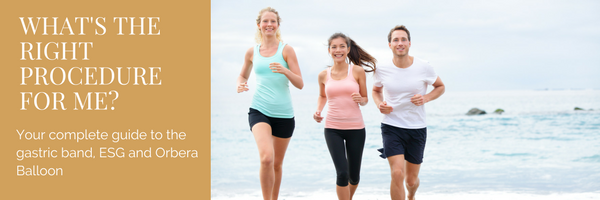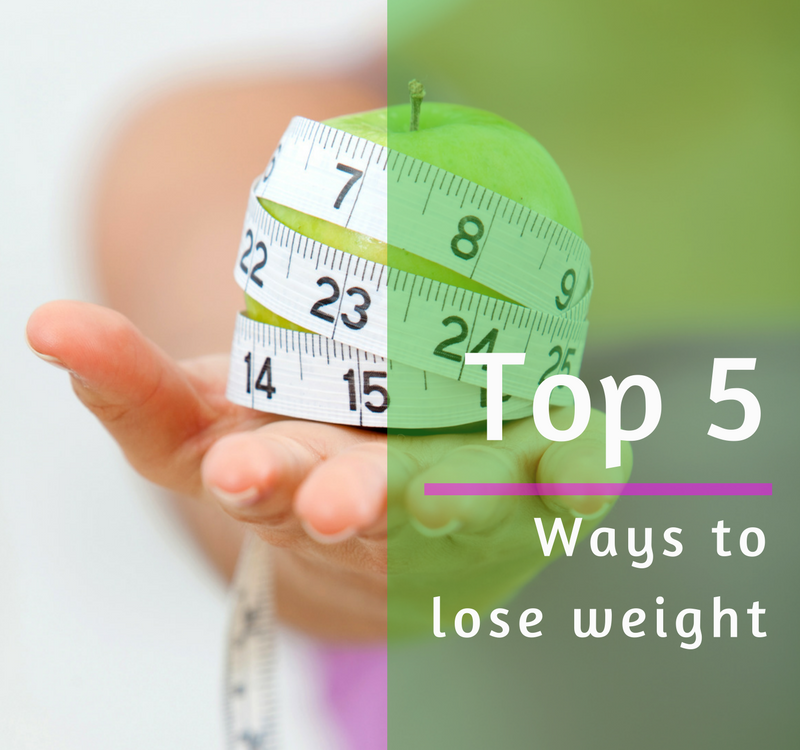
Choosing the right weight loss procedure
Your complete guide to the gastric band, ESG and Orbera Balloon
Have you tried diet after diet with no sustainable success? Are you about ready to give up on ever achieving the body and level of health you desire?
Don’t give up just yet! Weight loss surgery could be the solution you have been searching for.
I know for many the word ‘surgery’ for weight loss sounds extreme but it really is just another tool like any diet or fitness program you’ve tried before. The only difference being that the results you can achieve from weight loss surgery easily surpass any traditional weight loss intervention, especially when it comes to maintaining results.
If sustainable health and weight loss is what you’re after then a weight loss surgery or procedure could be the solution you’ve been searching for.
Once you have made the decision that surgery is for you, the next big decision is what type of surgery or procedure to have.
Let’s take a closer look at some of the options available to you, their pro’s & con’s and help you to make an informed choice.
Gastric Band
This type of weight loss surgery carries among the lowest surgical risk and it is also completely reversible. During the 60-minute surgery, a silicon band is placed around the top part of the stomach. The careful placement and pressure of the band stimulates appetite suppression, allowing you to feel full on a very small portion of food (a typical meal size is ½ – 1 cup).
Eligibility Criteria: To be eligible for this type of surgery you need to have a BMI of 35kg/m2 or higher or a BMI of 30kg/m2 or higher with co-morbidities (such as diabetes, high blood pressure or high cholesterol).
Expected Weight Loss: The expected weight loss after a gastric band procedure is around 65% of excess body weight. Weight loss is usually fast in the first 4-6 weeks (due to the restrictions of the post operative dietary phases). Weight loss then slows to around 2-4 kg per month. It takes, on average, 18 months to reach goal weight.
The Benefits: Appetite suppression and portion control are the main benefits of a gastric band as well as being totally adjustable and completely reversible
Things To Consider: Inability to eat certain foods can be a problem for many people with a gastric band. The common problem foods include fresh bread, dry meats, fruit and vegetable skins and rice.
If your large portions are because of habit or non-hungry eating/emotional eating then the gastric band will not directly suppress this type of hunger. It works to directly target physical hunger however many people still notice an improvement due to the reduced interest they have in food (resulting from physical appetite suppression).
All patients must be committed to a healthy lifestyle and regular review consultations with our multidisciplinary team (that includes doctor, dietitian, psychologist and personal trainer) for at least 12 months.Lifelong vitamin and mineral supplementation is required after gastric band surgery.
Endoscopic Sleeve Gastroplasty
This is a non-surgical procedure that offers the benefits of a traditional gastric sleeve without the surgical risk and without removing any of the stomach. This procedure takes around 90 minutes and essentially folds part of the stomach in on itself to reduce capacity by 70% and create a sleeve. This procedure is reversible and has a very quick recovery time. Most patients will return to work in 2-3 days.
Eligibility Criteria: The ESG procedure is well suited to individuals with a BMI between 30-40kg/m2 and who are not eligible for weight loss surgery.
Expected Weight Loss: The expected weight loss from this procedure is up 25% of total body weight
The Benefits: The ESG procedure can help to reduce the risk of weight related conditions such as reflux (GORD), heart disease, type 2 diabetes, high blood pressure and sleep apnoea.
There are no problems with food tolerance associated with this procedure
Things To Consider: There are some possible side effects to be aware of in the first couple of days following the procedure. These include abdominal pain, nausea, vomiting and abdominal cramping. A strict adherence to dietary guidelines will help to minimise side effects.
The weight loss results in the first 6 months following the procedure are crucial to long-term success. All patients must be committed to a healthy lifestyle and regular review consultations with our multidisciplinary team (that includes doctor, dietitian, psychologist and personal trainer) for at least 12 months.
Lifelong vitamin and mineral supplementation is required after the ESG procedure. A bariatric multivitamin and daily fibre supplement are recommended.
Orbera Balloon
The Orbera Balloon is a non-surgical procedure. It’s temporary, low risk and quick to insert while the patient is under anaesthetic. An empty balloon is inserted into the stomach via gastroscope then filled with saline solution up to between 500-700ml. The balloon sits in the stomach creating a constant feeling of fullness and significantly restricting meal portions. Each meal is about ½ – ¾ cup in size. There are post procedure dietary phases to adhere to however the transition is fast. Most patients are eating solid foods again within 3 weeks.
Eligibility Criteria: The balloon is perfect for those who have a BMI of 25kg/m2-30kg/m2
Expected Weight Loss: Expected weight loss from a balloon is 10-15kg in 6 months. There is the possibility for a second balloon if greater weight loss is desired. Each balloon must come out after 6 months due to risk of it potentially leaking.
The Benefits: Appetite suppression and portion control are the main benefits of a balloon.
Things To Consider: It’s temporary for 6 months and weight regain is possible after removal so it’s important to work closely with a support team to establish healthy habits that will assist with maintaining weight loss long term.
The recovery after a balloon can take up to 1 month but could also be as fast as a few days. Post procedure symptoms such as nausea and vomiting affect patients to varying degrees. It’s a good idea to prepare for the worst and hope for the best. Once the initial symptoms subside, patients feel back to normal and most people don’t notice the balloon other than feeling full.
The next step from here is to schedule an obligation free appointment with Mr Jason Winnett to discuss your weight loss and health goals.
Mr Winnett will work with you to decide the best procedure or surgery to get you where you want to be. Call 03 9417 1555 to book now.



